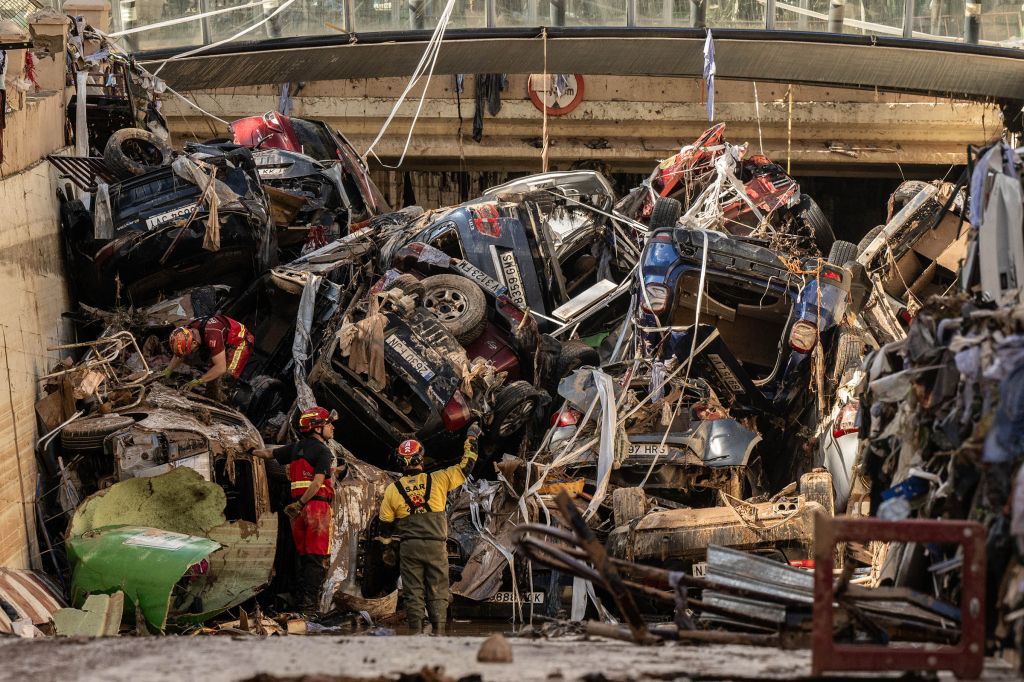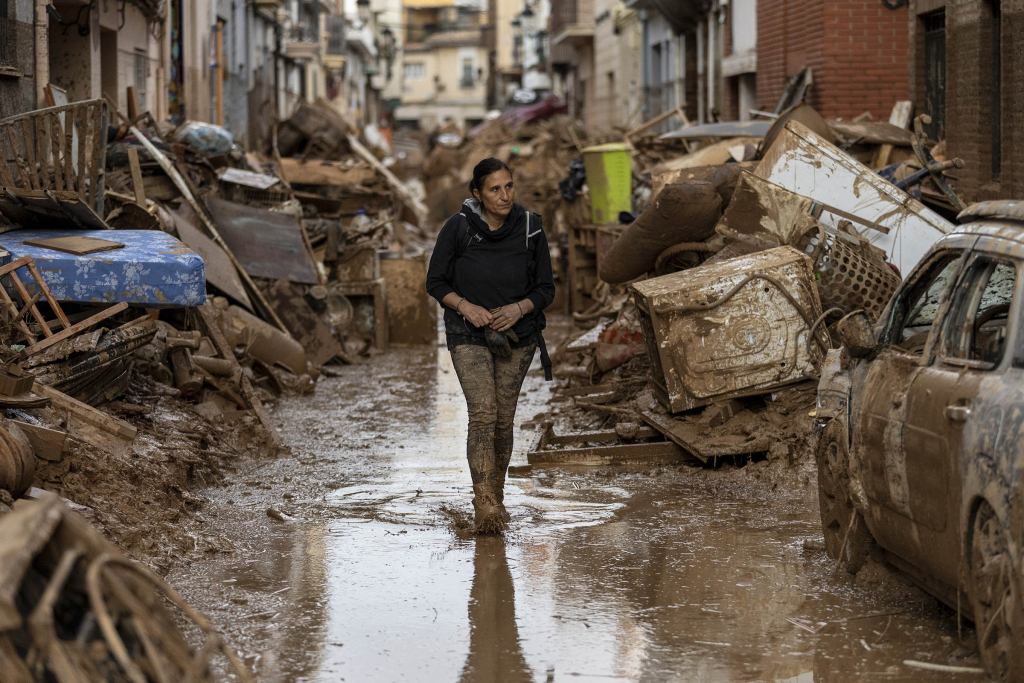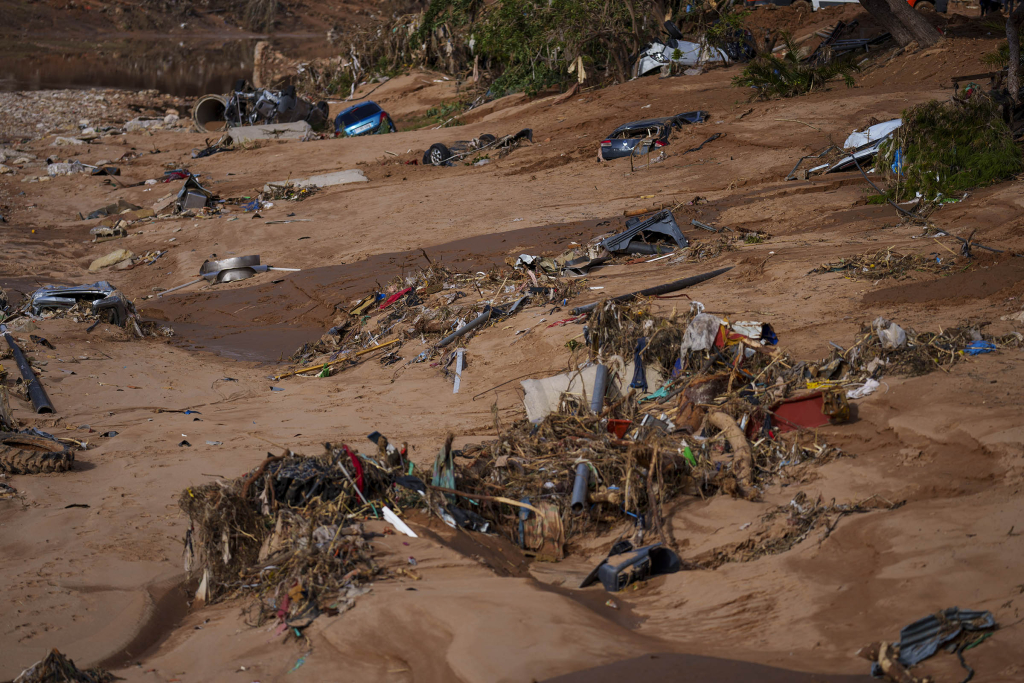By JOSEPH WILSON Associated Press
PAIPORTA, Spain (AP) — The pictures of the smiling toddlers on the wall somehow survived.
Most everything else in the daycare — the cradles, the highchairs, the toys — was ruined when a crushing wall of water swept through Paiporta, turning the Valencia municipality of 30,000 into the likely epicenter of Spain’s deadliest natural disaster in living memory.
“We have lost everything,” Xavi Pons told The Associated Press. He said the water level was above his head inside what had been the daycare run by his wife’s family for half a century, and he pointed to the knee-high mark where the mud reached.
“I have lived here all my life. This had never happened and nobody could have imagined it would,” Pons said. “All of Paiporta is like this, it is all in ruins.”
Authorities say at least 62 people died in Paiporta, of the 213 confirmed deaths from flash floods in Spain on Tuesday and Wednesday. The majority of those deaths happened in the eastern region of Valencia, and local media have labeled Paiporta the “ground zero” of the floods.
Four days have passed since the tsunami-like floods swept through the southern outskirts of Valencia city, covering many communities with sticky, thick mud. The clean-up task ahead remains gargantuan, and the hunt for bodies continues.
Many streets in Paiporta remain impassable to all vehicles but bulldozers, stacked as they are with piles of sodden furniture and household items and countless wrecked cars.
Every foot is caked with mud. Some people wield poles to steady their step as if walking these streets is a hike through a marsh.
A washing machine rests on its side among household junk in a church square. An enormous tree trunk rests inside a store that is missing a wall. An antique chests of drawers, paintings and a teddy bear, all still identifiable among the unrecognizable flotsam trapped in the all-consuming mire.
Lidia Giménez, a school teacher, watched from her second-story apartment as the usually dry canal that divides the town — “Barranco del Poyo” — went from completely empty to overflowing within 15 minutes. She called the aftermath of the flood “a battlefield without bombs.”
And it happened without a drop of rain falling on Paiporta.
The storm had unleashed a downpour upstream. That deluge then hurled toward Paiporta and other areas closer to the Mediterranean coast that were devastated by the flash floods.
Paiporta’s residents received no flood warnings from the regional government on their cellphones until two hours after the dangerous waters rushed through.
The onslaught of water widened the river bank, tearing away buildings and a pedestrian bridge, stripping the metallic handrails from another bridge and pulling vehicles into the canal. Eight wheels are the only parts that remain visible of an overturned truck sunk in Poyo’s muddy bottom.
The destruction could take weeks to clean.
Thousands of volunteers walked for more than an hour from Valencia city to help the people of Paiporta, carrying buckets, brooms and shovels as they waded into the grime.
Home owner Rafa Rosellón was waiting for heavy equipment to arrive to remove two cars — one half-resting on top of the other — that were washed away by the deluge and landed outside his home, blocking the front door. He had to unscrew a metal grating and slip though a window to get inside and witness the mess.
“I can’t do anything until those cars are moved,” Rosellón said. “The government forces that could do something, either from the regional government or the national government, have not done anything to help us. It’s us, the citizens and volunteers, who are doing all the work.”
Some 2,000 soldiers are involved in post-flood emergency work — searching for survivors, helping clean up and distribute essential goods — as well as 1,800 national police officers and almost 2,500 Civil Guard gendarmes. Spanish Prime Minister Pedro Sánchez said Saturday that they have rescued about 4,800 people and “helped more than 30,000 people in homes, on roads and in flooded industrial estates.”
Only a small contingent of soldiers was pushing mud in Paiporta on Saturday, when Sánchez promised another 5,000 soldiers and 5,000 police were on their way to eastern Spain.
Just a few doors down from where Rosellón lived, a woman sweeping muddy water from her door burst into tears when asked what she had lost.
“I can’t find my husband, so all this doesn’t matter,” she said.
Another turn revealed a chilling scene; a street filled with half a dozen cars and criss-crossed with countless reeds that before the flood had been growing nearby. A man screams from inside a house: “There’s nothing more I can do! There’s nothing more I can do!”
___
Associated Press writer Teresa Medrano contributed from Madrid.









